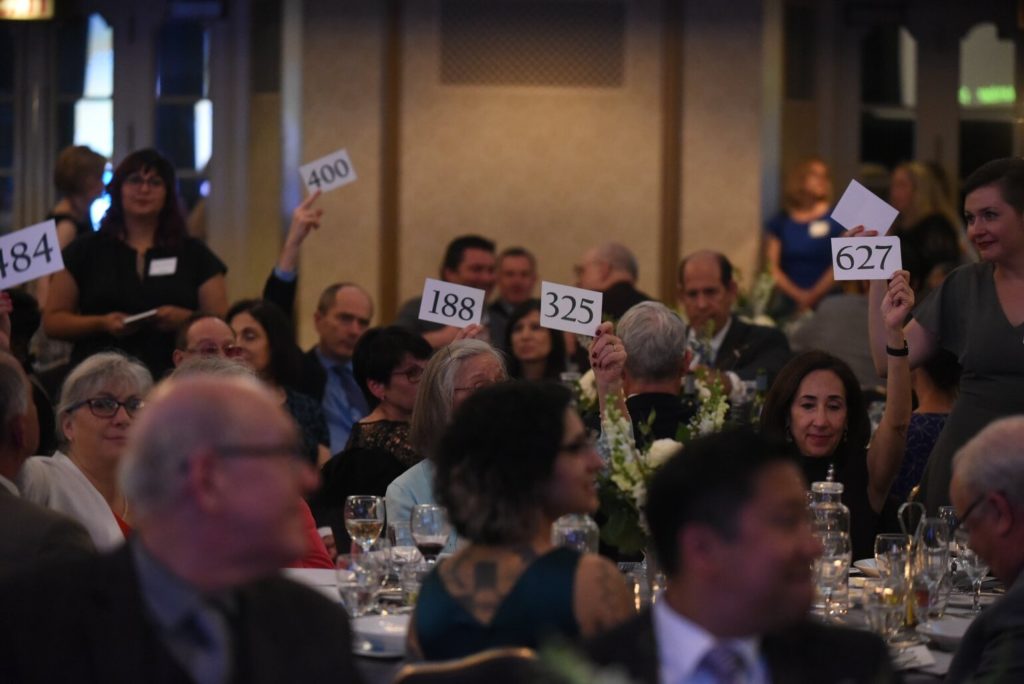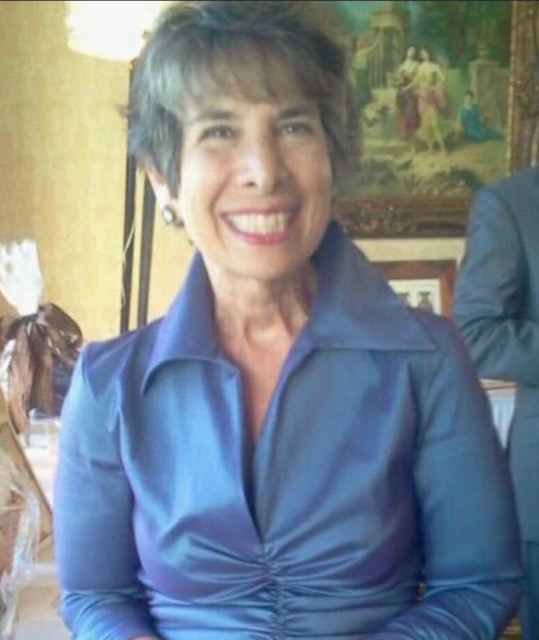For more than 60 years, the annual gala of the Lyric Opera was a highlight of the fall social season, attracting wealthy patrons decked out in tuxes and ball gowns.
But in 2020, a global pandemic brought all the glitz to a screeching halt — taking some charitable contributions right along with it. Without galas, walkathons, auctions and other in-person events, the storied opera company — along with almost every other nonprofit organization in Chicago — had to find ways to step up when the world shut down.
“Last season required a lot of stamina, creativity and imagination,” said Deb Hare, the Lyric’s senior director of boards and special events. “When it came to connecting people, we couldn’t communicate with our supporters enough.”
Even in the best of times, fundraising is a constant challenge. In 2018, for the first time, less than 50 percent of American households donated money to charity, down from 66 percent in 2000, according to Indiana University’s Lilly School of Philanthropy.
Last year was a mixed bag and unlike anything we had seen before, said fundraising professionals.
On the whole, virtual events generated less revenue, but they also required less overhead and some nonprofits broadened their reach. A virtual event based in Chicago could see participation from a supporter in Australia, for example.
Holly Agra, president of Chicago’s First Lady Cruises, said she fielded calls from groups looking to hold smaller fundraising events that also have an outdoor component. Her vessels accommodate groups as small as six and as large as 250, with space for indoor and outdoor gathering.
“Organizations are eager to get out; organizations are eager to do something different,” Agra said. “They’re eager to be safe and eager to earn a little bit of money.”
By the end of 2020, the markets had rallied, the stimulus package and rollout of the Covid-19 vaccine sparked optimism. Some sectors, such as human services, fared well while others — such as arts, culture and humanities — suffered, said Anna Pruitt, managing editor of Giving USA, the group’s annual report.
Even groups that took a financial hit managed to see an upside to the pandemic, which spurred innovation that may have otherwise taken years to implement. Many of those lessons will apply to the fall gala season, when Chicago’s fundraisers and charitable events — some of which are still in flux — typically peak.
“There’s no way to separate the growth from the folks who worked so hard this year under such difficult conditions,” Pruitt said. “We honor their work and look forward to seeing what they’ll do next.”
The Lyric Opera

The Lyric was one of those vulnerable arts institutions, incurring losses of roughly $13.6 million due to the cancellation of the spring 2020 season, including the Ring Cycle. The four-day 15-hour experience, known as the Olympics of Opera, had been in the works for nearly a decade. Fans from every state and 30 countries had already purchased tickets, when the plug was pulled, resulting in a wave of refunds.
Without box office revenue, the Lyric’s fundraising became even more essential. In March 2020, just weeks after the shutdown, the board changed the September fete to a virtual platform. Staff delivered catered dinners and flowers to the most generous sponsors, who hosted gatherings of families and friends in their homes, complete with a more intimate online music experience to round out the evening. It was a vivid reminder of the joy of great performances and how they can be a balm to the soul during tough times.
“People wanted to support us,” Hare said. “They love the art form and that love, combined with our reduced expenses, made the fall event one of the most successful fundraisers in the history of our company … And the generosity of the major sponsors made it possible to share this concert with the general public the following evening.”
Additionally, the Lyric produced virtual concerts and found new ways to reach non-traditional audiences by working with the Chicago Public Schools and the Urban League.
“It wasn’t a dark season, but it was a re-imagined one. We kept refining our message: Your Lyric is still around, and we’re not going anywhere,” Hare said.
Juvenile Protection Association
At the Juvenile Protection Association — a 120-year-old organization that brings mental health professionals into the classroom to help students in under-resourced neighborhoods — the pandemic’s impact was felt immediately. The spring benefit in May 2020 brought in just one-third of the revenue online that is typically raised in person, according to Karen G. Foley, executive director.
But a year later, JPA was ready. Everyone who “attended” in 2021 did so via screen, but this time many supporters donned formal attire and hosted small watch parties in their homes. “I think that added to the fun … more socializing and perhaps some friendly peer pressure to bid on a silent auction item or donate during the paddle raise,” Foley said.
The result? More and a higher level of donations in the second year.
JPA also added several new dates to the calendar, such as a 5K walk, virtual wedding and baby showers (with staffers delivering cupcakes) and the usual casino night morphed into a gaming night, attracting hundreds of young people — a hard-to-reach demographic. In September, JPA is planning its first golf outing because everyone wants to be outside.
At precisely the time that fundraising took a hit, JPA had no choice but to adapt because more people than ever relied on their services. Instead of meeting at school, therapists reached out to clients via telehealth — and not just to the kids, but to their parents, many of whom are essential workers, juggling their own jobs, bills, child care and health concerns. (Beyond cash, donors came through with therapy kits filled with granola bars, coloring books and slime, a big hit with youngsters.)
“There was so much grief and suffering,” Foley explained. “Almost every client knew someone close to them who had died of this terrible disease, so the conversation changed from ‘How do I help my child?’ to ‘How do I help myself?’ We expect that telehealth is here to stay. The silver lining for us is that Covid handed us a rare chance to de-stigmatize asking for help.”
Hadley

The Winnetka-based nonprofit Hadley offers assistance to anyone with a visual impairment, free of charge. More people learn Braille here than any other source in the world, according to its website.
But in 2020, the charity (originally known as Hadley School for the Blind) was hit with a double-whammy. The virus coincided with the organization’s centennial, derailing plans for a major fundraiser in April 2020. The benefit, scheduled for The Dalcy, an elegant space in Fulton Market, was projected to bring in $300,000.
Despite postponing until October, organizers soon realized that they would have to shift to a scaled-down, cyber-soiree. They brought in a live emcee, door prizes and shortened the program to sustain interest.
“Thankfully, all of our sponsors stayed with us, but we lost $25,000 in the live auction and $75,000 in the paddle raise, which is one of those activities that require a roomful of enthusiastic people and cannot be easily achieved in a virtual setting,” said Brooke Voss, chief development officer.
Unlike other nonprofits, Hadley was already up to speed with technology, which their students have long relied on for classes. The organization pivoted quickly to the new normal, offering more podcasts, including some with Covid-related themes, such as: How do you judge 6 feet of social distance when you’re sight impaired?
With senior centers closed, many people struggled with isolation. The site picked up more users, expanding Hadley’s donor base.
“People came to us not just for learning, but to alleviate loneliness,” Voss said. “They wanted to be in touch, so we just needed to find more ways to be in contact with them — and more frequently. We absolutely will be keeping those practices when all this is over.”
Thresholds

As Covid cases spiked, so did anxiety, depression and addictions. Thresholds, the state’s largest mental health provider, faced a big task: Meet the increased demand while overhauling its fundraising efforts.
“The reason we keep doing the same events year in and year out is because they work,” explained Emily Moen, vice president of public relations and marketing. “People see their friends raising their hands (at an auction), so they do the same. It’s just a nice, social way to do an ask.”
But with everyone stuck at home, the old ways had to be scrapped. The number of donors supporting Threshold’s spring gala declined by 14 percent from the previous year. If the staff didn’t find some fresh ways to engage givers, revenue would shrink even further.
So, Thresholds went big by going small. It created a sponsor tool kit, providing supporters with a menu of options for reaching out to friends and family. The kit included everything from note cards to social media graphics to email templates for a more individualized approach.
For example, one board member held a fundraiser using Facebook, Instagram and other platforms — to honor her late husband’s 40th birthday. While that strategy was successful with a tech-savvy crowd, it would not have been effective with the old guard, who might prefer hand-written invitations to a cozy dinner party, Moen said.
“We found that people wanted to pick and choose what makes the most sense for their social circle and contacts — which is something we will continue in the future. The pandemic forced us to think outside the box, which will be helpful as we move forward.”
More from Better:
- Donate to Fuel the Fight Against Cancer, and Your Gift Will Be Matched
- Better Makers: Yo-Yo Ma Congratulates Ingenuity on 10 Years of Success as Arts Education Nonprofit Looks to the Next Decade
- Greater Chicago Food Depository Partners with Share Our Spare to Deliver 6 Million Free Diapers to Babies in Need

Bonnie Miller Rubin grew up on the North Shore and was a reporter for the Chicago Tribune for 25 years, specializing in health and family issues. She is a regular contributor to The Washington Post and The Wall Street Journal.

